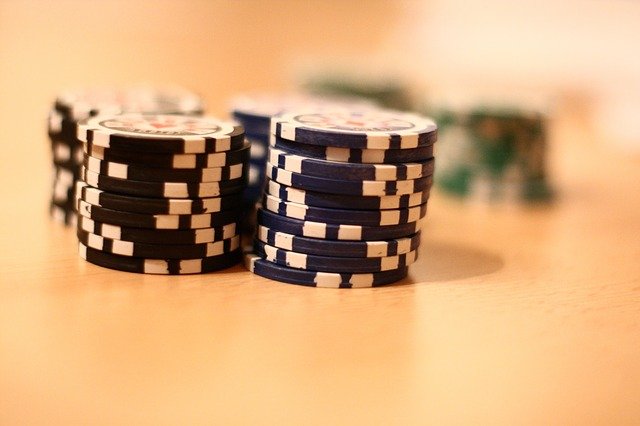Raised Pre-Flop? Not Sure Whether To C-Bet Your Missed Hand? Read On For Tips
That Show You How To Make Those Continuation Bets More Effective.
After you raise pre flop it is usually a profitable move to ‘continue’ with the aggression you showed once the flop comes – whether your hand actually improved or not – by betting out. This is known as a continuation bet – it is sometimes abbreviated to cbet or c-betting.
Continuation bets are an important part of poker strategy, they serve 2 main purposes. Firstly you will use them as a form of bluff and take down the pot on the flop. Secondly, when you have a very strong hand, you will want to build the pot – so betting often on the flop will help to disguise those times when your raise it for this purpose.
There are many factors which affect whether your continuation bet will be successful, here we are assuming your objective it to win the pot immediately after the flop comes. These factors include the number of players in the hand, bet sizing, skill and experience levels of your opponents, the texture of the flop and how many high cards there are on the flop. After going through these factors one by one I'll share thoughts on the ideal situations to c-bet (and when not to!). Finally a small read to watch out for the next time you play - opponents often accidentally give away a monster hand by their continuation betting behavior.
Continuation Bet Success Factor #1 – Number of Opponents
The bigger the number of opponents active in the hand on the flop the lower the chance that your continuation bet will succeed. Against a single opponent you can expect to win the pot more than half the time, against 4 or 5 opponents your success rate can plummet to 20%. If you missed the flop completely 1 or a maximum of 2 opponents is best.
Combining the number of opponents with the type of flop can make your decision very easy. For example, if you have several players still in the hand and there are high cards and draws to straights and flushes on the flop then the chances of everyone folding is very small. A continuation bet here should be made with strong made hands or pair / draw combinations which want to build a pot, not as a way to pick up the chips in the pot immediately.
Planet Mark’s Rec: America’s Cardroom are crushing it for online poker tournament events that welcome both US and worldwide players. ‘The Venom’ tops the list, with the OSS events, PKO games and a packed regular schedule with guarantees that are growing all the time.
Best of all, you can get your bankroll off to a flying start with a huge 100% welcome deal using bonus code SNGPLANET.
Check out the latest promos and tournament events for yourself now at www.americascardroom.eu!
Continuation Bet Success Factor #2 – How Big You Make Your Bet
Larger continuation bets succeed more often – yet lose you more chips when they fail. Very small cbets are likely to be called often, while this diminishes as the bet gets larger there is a statistical ‘sweet spot’ between 40% to 60% of the current pot size. This gets the maximum value as bets of this size usually induce opponents to fold, bigger (pot size or above) bets get slightly more folds – but more chips when they are called.
Remember that it is always an advantage to act after your opponents. Players will be less inclined to call bets when they know they will be out of position for the rest of the hand. This means you can generally size your bets smaller when you are last to act than when you are the first of several players. Beware of novices who are not aware of position or relative hand strength. Against this type of opponent you might well get called with any pair, draw or just hope! You can often make bets bigger when you have a hand to get maximum value with this type - though make sure that you mix up your sizing well enough against experienced players so that the size of your bet does not give away the strength of your hand.
Continuation Bet Success Factor #3 – Skill and Tendencies of Opponents
There are two types of opponent who are more likely to call your continuation bet. Highly skilled players and very unskilled players! The highly skilled players will expect you to cbet and will call often to see what you do on the turn. ‘Calling Stations’ (very bad players who tend to call too often) will think that their 3rd pair with no kicker is a good enough hand to call all the way to the river – be careful of both of these opponents!
Nowadays, players like to 'float' on the flop. This is calling a continuation bet without a hand, with the plan of taking away the pot on a later street if the original raiser shows weakness or a scary card appears. If you often give up after c-betting the flop then observant players will start making this move on you. Compensate by sometimes firing a second barrel on the turn, or delaying your contination bet from the flop to the turn. If you see someone call a lot of these bets you should make a note - the downside of 'floating' is that it can get expensive when it does not work.
Continuation Bet Success Factor #4 – Potential Draws on the Flop
When the flop comes with 3 suited cards or 3 cards to a straight the success rate of continuation bets goes down considerably. This is because many opponents will call your bet in the hope of getting paid off if they hit their straight or flush. The same is true with 2 suited cards or connected flops that do not make an obvious straight – the more draws potentially available the less likely your cbet is to succeed. Conversely, flops that contain pairs are excellent candidates for c-bets. These are much less likely to have hit your opponent.
A flop with several draws is known as a 'wet' flop, while one with just one high card and 3 different suits (so few draws) would be considered 'dry'. It can pay to think about the kind of hands your particular opponents like to call you with, and then compare those hands to the flop texture. For example, someone who prefers high cards to suited connectors when calling pre-flop will be less of a threat on a lower coordinated board than someone who prefers to get tricky with those speculative hands.
Continuation Bet Success Factor #5 – High Cards on the Flop
The higher the flop comes the more likely your continuation bet is to succeed. Flops containing an Ace are the best of all. You should often bet out even when you do not hold an Ace yourself as your opponent will not generally call without one. The same principle works with King and Queen-high flops. As the board gets lower your cbet success rate will drop – be careful on those small-card flops as players holding small pairs will often assume you are betting your missed Ace-X hand and call you.
If there are 3 cards 9 or higher on the flop then you will find players with draws to boardway straights and pair + gutshot type hands calling you. If getting called by these hands will make your play unclear on later streets then you should consider whether you have particularly call-happy opponent(s) in the hand. Remember, this flop might be scary for them too!

Bringing Together These Factors - To C-Bet or Not To C-bet?
There are game specific factors to include in this decision, for example stack sizes or tournament (or SNG) situations and whether you are playing against multi-tabling opponents in cash games. For beginning players the key decision factors should be the number of players combined with the texture of the flop. On a 'wet' flop with several opponents and a missed hand I often decline continuation betting. Against 1 opponent with an ace-high uncoordinated flop I am firing almost always... particularly against a straight-forward 'fit or fold' type opponent.
Remember, sometimes you will have a monster hand yourself and actually want to 'look like' you are making a standard continuation bet - when your real objective is to build a big pot! Having made several c-bets recently, especially if nobody saw your hand, is a great way to get your opponents primed to play back at you... hopefully at just the right time.
A Bonus Hand-Reading Tip - Experienced Opponents Who Decline Continuation Bets
Here is something I like to look out for at the tables. If an opponent you have tagged as an experienced or good player sees a perfect spot for a continuation bet (1 opponent, dry flop with 1 high card) and decides not to bet out, then this can often be an indication of a monster hand. The player knows that the situation is great and that a bet should take the pot the majority of the time, and yet actively decides against this... Since you know they would bet all their missed hands here, and semi-strong hands are hard to have on that kind of flop - this only leaves monsters like overpairs and sets who do not want to 'lose their customer'. Watch out for this next time you play, and if it comes up then let me know!
Summary + Next Steps
So, the very best time to continuation bet is against a single opponent on an Ace high flop of 3 different suits with no obvious straight draws. You should aim to bet around 40% to 60% of the pot – which means you need to succeed only one in three times to show a profit. Remember to avoid doing this too often into highly skilled (or tricky) opponents and please, do not bluff those calling stations!!
Planet Mark’s Rec: America’s Cardroom are crushing it for online poker tournament events that welcome both US and worldwide players. ‘The Venom’ tops the list, with the OSS events, PKO games and a packed regular schedule with guarantees that are growing all the time.
Best of all, you can get your bankroll off to a flying start with a huge 100% welcome deal using bonus code SNGPLANET.
Check out the latest promos and tournament events for yourself now at www.americascardroom.eu!


